Overcoming the fear of starting music as an adult
Overcoming the fear of starting music as an adult is why I wrote this friendly guide. I name my self-doubt to beat it. I spot the small signs of beginner anxiety, use simple breathing to calm my nerves, and choose a first instrument that fits my body and ears. I build tiny practice habits with short sessions and one clear goal each time. I drop perfectionism and track progress, not every slip. I rehearse tiny performances with friends, find teachers and groups who cheer small wins, and train a growth mindset. I set gentle tiny goals and design a calm practice space with easy checklists and simple routines to keep going.
Key Takeaway
- Start with small steps and keep it simple
- Let yourself make mistakes and learn from them
- Focus on joy, not perfect sound
- Ask for help and accept guidance
- Celebrate small wins to build confidence
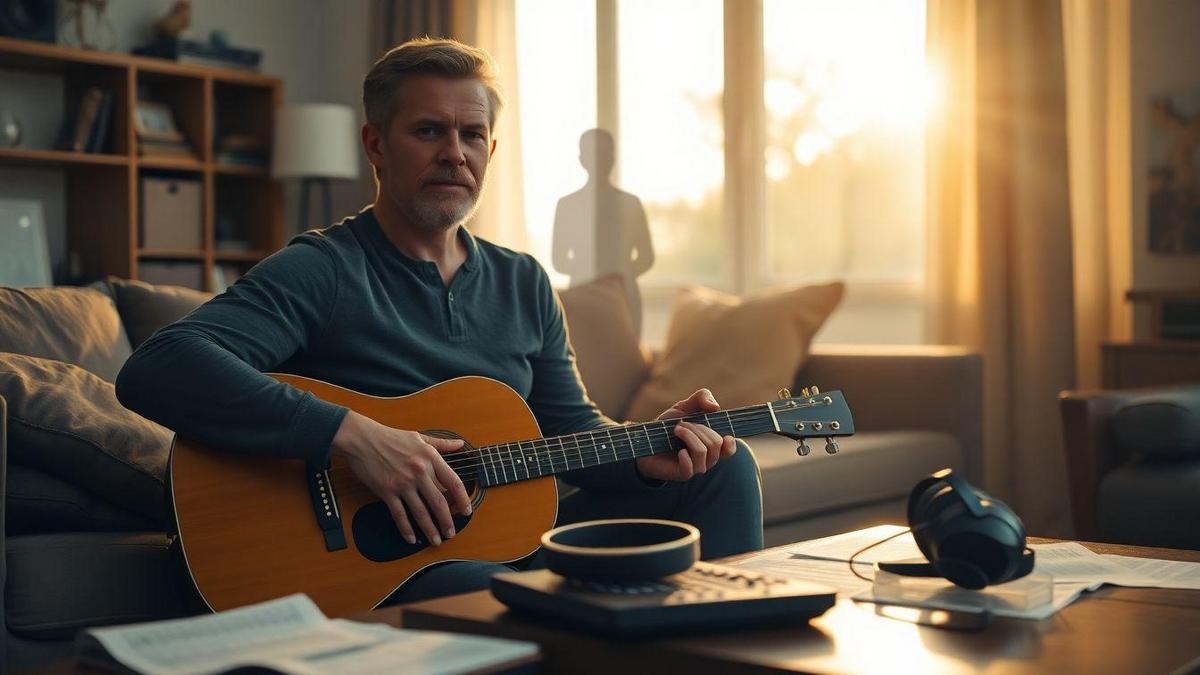
I name my self-doubt to beat it
I give my self-doubt a name: “The Critic.” Naming it makes it feel smaller and easier to manage. When I say, Hi Critic, I can reply: Thanks for your input, but I’ll try this anyway. That turns fear into a conversation instead of a roadblock.
I spot common signs of beginner music anxiety
I watch my body and thoughts like clues so I can catch anxiety early. For more practical guidance, see Recognize and manage performance anxiety symptoms.
| Sign I notice | What I feel or do |
|---|---|
| Fast heart | Breathe shallow and rush mistakes |
| Cold hands | Avoid touching the instrument |
| Negative thoughts | I can’t or I’m too old |
| Perfection trap | Stop after a small mistake |
| Comparing to others | Quit before I start |
When I see one of these signs, I name it: That’s The Critic again. Naming keeps me present and helps me choose the next action.
I use simple breathing to calm my nerves
I breathe slow and steady. My voice softens. My hands relax. Short routine before I play:
- Sit tall. Place one hand on your belly.
- Inhale for 4 counts through the nose. Feel the belly push your hand out.
- Hold for 2 counts.
- Exhale for 6 counts through the mouth. Feel the belly fall.
- Repeat three times.
This lowers my pulse, slows the Critic, and makes my fingers listen. For guided routines and step-by-step practice, try Simple breathing exercises to calm nerves. I use it before lessons, recordings, and new chords.
Quick emotion-labeling (30 seconds)
- Stop and breathe once.
- Ask, What am I feeling?
- Say it out loud: I feel nervous, or I feel excited.
- Add one detail: nervous because I might make mistakes.
- Let it be for 10 seconds, then choose one small action.
Labeling makes the emotion less loud and gives me room to play one note, then another.
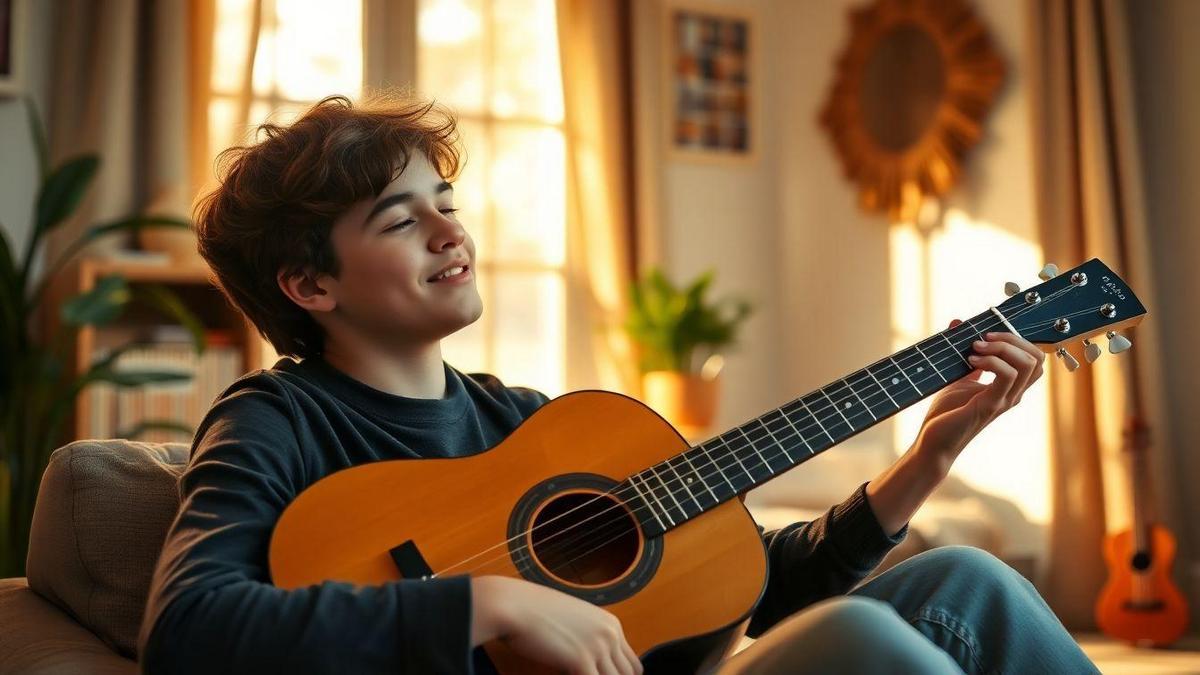
I pick my first instrument without pressure
Picking an instrument is like trying on shoes: it must fit your body and ear. Let curiosity lead, not worry. For physical-fit and health guidance when testing instruments, see Advice on instrument fit and musician health. This is a key step in overcoming the fear of starting music as an adult — choose what feels comfortable and joyful. If you’re unsure between common options, compare guitar, keyboard, and drums to find your style.
I match the instrument to my body and hearing
Check weight, posture, and tone. Comfort keeps you practicing.
| Instrument group | Good if your body is… | Sound you might like |
|---|---|---|
| Guitar / Ukulele | Hands that can press strings; sit or stand comfortably | Bright or warm string tone |
| Piano / Keyboard | Stable chair posture; finger reach for keys | Clear, percussive and harmonic sound |
| Violin / Cello | Fine finger control, shoulder/arm use | Singing, expressive string tone |
| Flute / Clarinet / Sax | Good breath control; comfortable embouchure | Airy or woody wind tones |
| Trumpet / Trombone | Strong breath and lip stamina | Bold, brassy sound |
| Drums / Percussion | Good rhythm and arm motion | Energetic, rhythmic impact |
Try holding or playing the instrument for a few minutes. If it makes you smile, that’s a big clue.
I try renting or borrowing before I buy
Rent or borrow to lower pressure and save money. Test an instrument before committing.
| Action | Why | What to watch for |
|---|---|---|
| Rent | Low monthly cost; test for weeks | Comfort, sound, practice habit |
| Borrow | Free short trial from a friend | How it fits day-to-day life |
| Shop demo | Try several models quickly | Size and weight that work best |
Simple trial checklist:
- Hold it for 1–2 minutes. Is it heavy or balanced?
- Make a sound. Do you enjoy the tone?
- Try a simple scale. Can you move fingers or breath easily?
- Check comfort. Any pain after 5–10 minutes?
- Set a test period. Rent 30 days or borrow two weeks.
- Ask one question. Will you reach for this instrument in free time?
Be honest with these checks — they make the choice clear.
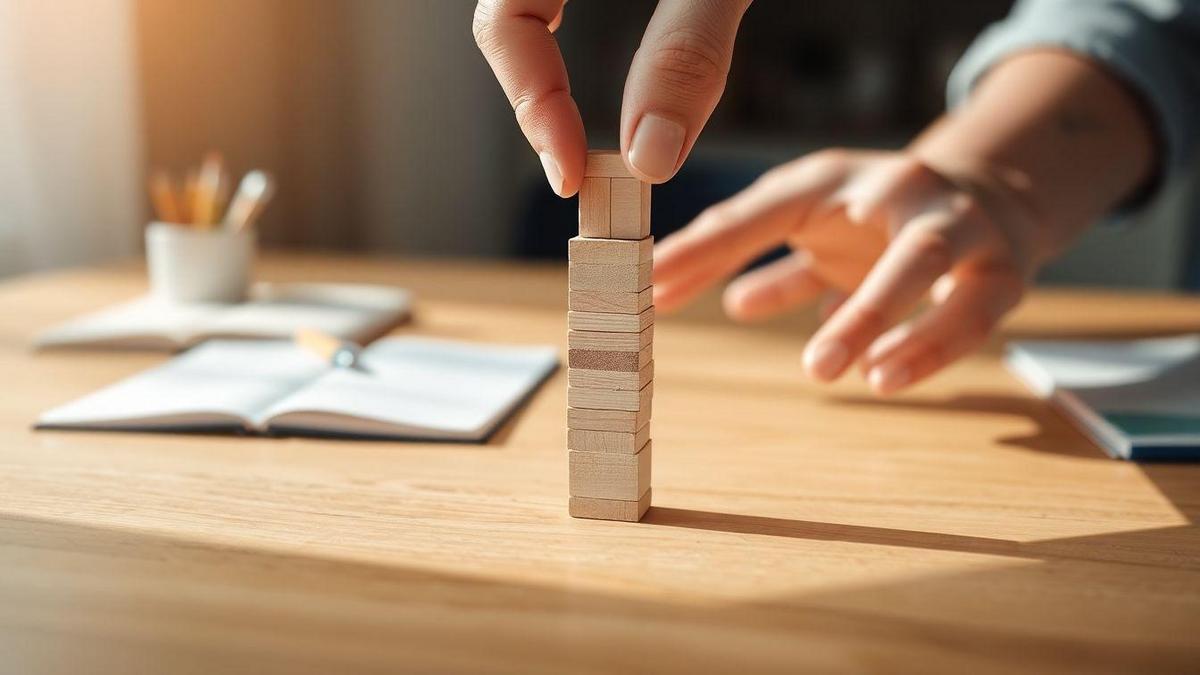
I build tiny practice habits using small-step strategies
I start with 10-minute sessions that add up
Ten minutes feels small and lowers anxiety. I set a timer and pick one simple task: warm fingers, play a short scale, or sing a phrase. Treat each block like a single brick — over time they build momentum. For ideas on structuring short daily sessions, I read about the power of short daily practice and adapt it to ten minutes.
Rules I use:
- Clear start and end. No distractions.
- Same time each day to make the habit stick.
- Celebrate tiny wins — a smile works.
I focus on one clear goal each session
Pick one clear goal before you start — tiny and testable. Examples: play a C major scale slowly or change between G and C chords five times. One goal keeps practice focused.
| Goal Type | Example Goal | How I Measure Success |
|---|---|---|
| Technique | Play C major scale | Clean notes at steady tempo |
| Rhythm | Keep a 4/4 beat | 10 measures without rushing |
| Song snippet | First 8 bars | Play without mistakes twice |
| Ear training | Match a note | Match pitch within 2 tries |
A 7-day tiny practice plan (10 minutes each)
| Day | Focus | Action Step | Success Check |
|---|---|---|---|
| Day 1 | Warm-up | Finger or vocal warm-up | No tension after 10 min |
| Day 2 | Scale | Slow C major scale | Even tone for 2 reps |
| Day 3 | Chords | G → C changes | 5 smooth changes |
| Day 4 | Rhythm | Tap and clap pattern | 8 bars steady |
| Day 5 | Song piece | First 8 bars of a song | Play twice without skip |
| Day 6 | Listening | Sing a note you hear | Match pitch within 2 tries |
| Day 7 | Review | Combine best parts | Play 3 items, feel progress |
Tips: jot one line after each session, allow one missed day without guilt, adjust tasks if too hard.

I let go of perfectionism by focusing on progress, not perfection
I stopped waiting for perfect days. Tiny goals in short sessions helped me fight fear and build confidence. Practice is a series of small wins. Each mistake is data, not a verdict. Saying I am learning out loud calms me.
I track improvement, not every mistake
Keep a simple log: one line after each session noting one thing you did better. Avoid listing every error — focus on growth.
| What I notice | How I measure | Why it helps |
|---|---|---|
| Progress on one skill | Count reps or tempo increase | Shows steady gains |
| One clear goal met | Mark with a date | Builds momentum |
| Mood after practice | Quick emoji or word | Keeps practice positive |
Recording yourself helps too — it makes progress obvious and mistakes sound fixable. For mindset and the idea that practice beats innate talent, I check perspectives on talent vs. practice.
Short recording checklist:
- Warm up 5 minutes.
- Pick one goal to show.
- Record one take.
- Note one win and one fix.
Mantra to combat perfectionism: “Small steps, steady ears, I learn.”
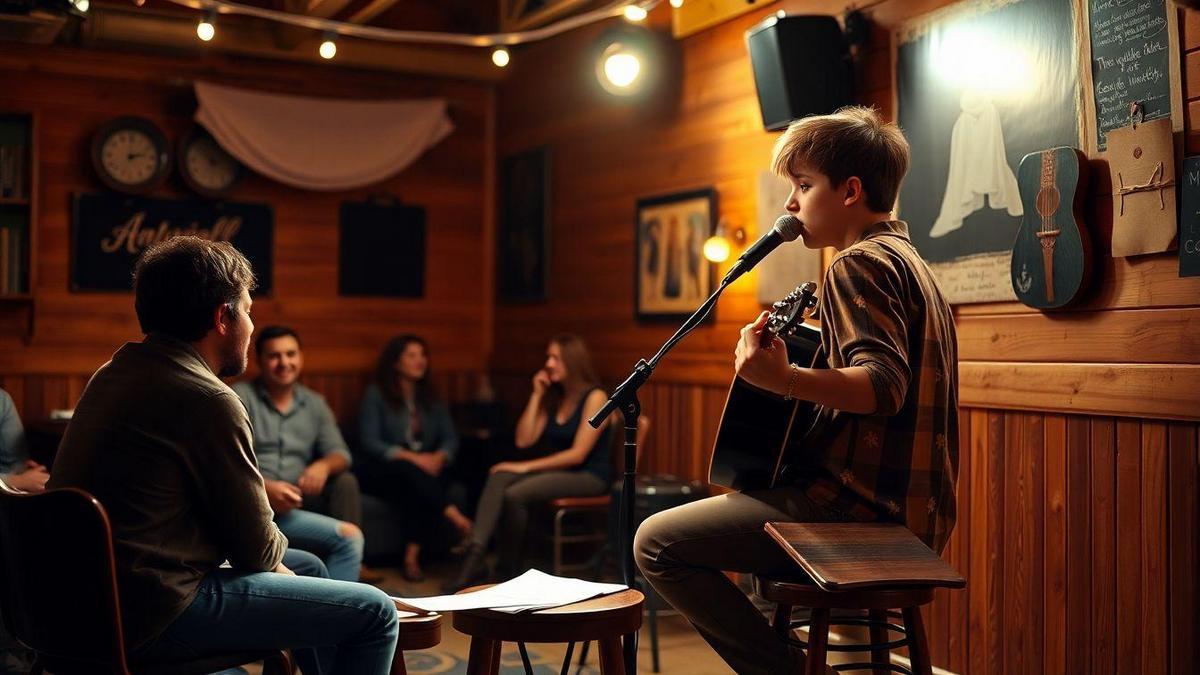
I prepare for small performances to reduce stage fright
I begin with friends or a small group
Start by playing for friends or a small, trusted group. Tell them you’re learning — their smiles calm you.
Why this works:
- Honest feedback
- Low pressure to experiment
- Confidence grows step by step
| Setting | Why I pick it | Typical size |
|---|---|---|
| Living room session | Gentle audience, relaxed vibe | 2–6 people |
| Lesson showcase | Teacher and peers | 3–8 people |
| Coffee-chat meet | Short sets, friendly crowd | 5–12 people |
I rehearse only the start and end of a piece
Focus practice on the start and end — those shape most of the performance. Memorize the first phrase and repeat the last 15–30 seconds until natural. Run them back-to-back three times before performing. To make those lines sing, I practice adding emotion to every note in small, repeatable ways.
3-step pre-performance routine:
- Breathe — three slow breaths to drop pulse (30 sec).
- Warm one thing — play first and last phrase once (1–2 min).
- Visualize — picture the first and last chord (30 sec).
These steps anchor you and quiet nerves.

I seek the right teacher or group to ease beginner anxiety
I look for teachers who focus on positive steps
Find a teacher who gives small wins, uses simple language, and sets short weekly goals. Lessons that start with a song you like keep practice fun.
Signs to watch for:
- Praises real progress, not just talent
- Gives clear practice plans for 10–20 minutes
- Shows how to fix one mistake at a time
| Teacher trait | Why it helps | Listen for |
|---|---|---|
| Patient | Feel safe to try | “Take your time” |
| Goal-focused | See real progress | “Let’s aim for this week” |
| Song-first | Practice feels fun | “Try this short song” |
| Clear feedback | Know what to fix | “Work on rhythm here” |
I join beginner groups or online forums for support
You’re not alone. Groups offer support, honest feedback, and friends who make mistakes too.
Check for:
- Is it for absolute beginners? (safe space)
- Are members encouraging? (positive vibes)
- Do members share short practice tips and videos?
| Type | Good for | Where to find |
|---|---|---|
| In-person group | Hands-on help | Local music schools, Meetup |
| Online forum | Fast answers, many tips | Reddit, Facebook groups |
When lessons include clear homework, I look for simple resources like how to read chords and sheet music and approachable theory explanations such as is music theory really that scary?
Key questions to ask a prospective teacher:
| Question | Why I ask it | What I hope to hear |
|---|---|---|
| “How do you teach beginners?” | I want simple steps | “We start with easy songs and short practice.” |
| “How do you handle mistakes?” | I want kindness | “Mistakes are part of learning; we fix one thing at a time.” |
| “What will I practice between lessons?” | I need clear homework | “Ten minutes daily on this exercise.” |
| “Can I try a lesson first?” | I need to feel comfortable | “Yes, try one lesson with no pressure.” |
| “How do you measure progress?” | I want real signs of growth | “We track small goals weekly.” |
If the teacher sounds rushed, keep looking.

I train a growth approach to learning music
Working from a growth mindset keeps doubt small and progress visible. I use short habits, turn fears into small actions, and treat practice like a ladder. Each rung matters in overcoming the fear of starting music as an adult.
I reframe mistakes as useful feedback
Each mistake is a signal, not a failure. Ask: What exactly did I miss? Then try one small fix.
| Common mistake | Reframe | Small action |
|---|---|---|
| Missed note | Feedback on finger timing | Slow the phrase and repeat 4 times |
| Wrong rhythm | Clue about counting | Tap the beat and count aloud |
| Stuck passage | Pointer to a weak spot | Break into 2-bar chunks |
Short, focused repeats beat long aimless practice. Playing also clears the mind — I think of music as helpful for mood and focus, much like music-as-therapy.
I celebrate tiny wins every day
I log small wins: date, win, and one next step. Rewards are small: tea, a five-minute jam, or sharing a win with a friend. For evidence on how music supports mood and motivation, see Benefits of music and learning for adults.
| Tiny win | Why it matters | Next tiny step |
|---|---|---|
| Played a 4-bar phrase | Shows muscle memory | Add one more bar next time |
| Held steady tempo | Improves groove | 3 minutes with a metronome |
Daily mindset prompts:
| Prompt | How I use it |
|---|---|
| What one tiny thing can I improve now? | Choose a micro-task for the session |
| What did I learn from that mistake? | Write one sentence in my log |
| What counts as progress today? | Name a small win before stopping |
Pair prompts with a 2-minute breathing break when stuck.
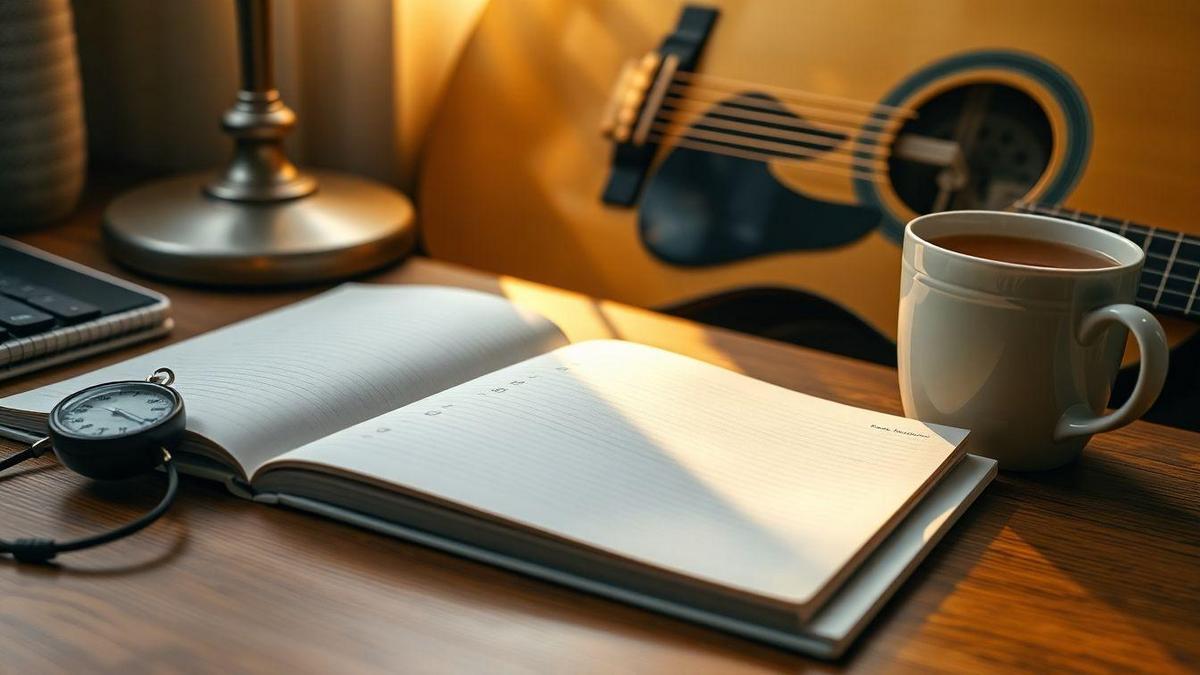
I set tiny goals to build motivation and avoid burnout
I make goals simple and measurable
Break practice into micro-goals: very small, clear, and measurable. This helps with overcoming the fear of starting music as an adult because numbers calm worry.
Examples:
- Play a 4-bar phrase 3 times slowly.
- Hold a chord clean for 10 seconds.
- Practice scales for 5 minutes with a metronome.
I reward effort rather than perfection
Praise the work, not the result. If you showed up and practiced, that’s a win.
Small rewards:
- A good cup of tea
- A 10-minute walk
- A sticker or tick on a chart
Sample milestone chart for month one:
| Week | Daily Goal (mins) | Clear Measure | Small Reward |
|---|---|---|---|
| 1 | 10 | Play one 4-bar phrase 3 clean reps | Tea |
| 2 | 12 | Play two phrases, each 3 clean reps | 10-min walk |
| 3 | 15 | Add one scale for 5 minutes at steady tempo | Watch a short show |
| 4 | 20 | Combine phrases into a 30-sec loop without stopping | Treat snack |
Small, steady nudges build real momentum.

I design a calm practice space and schedule
Make practice easy to start by reducing friction. This is practical help for overcoming the fear of starting music as an adult.
I keep tools ready and remove distractions
Small kit always at hand: tuner, metronome, picks/rods, notebook, and a stand. Phone on Do Not Disturb and facedown.
| Item | Purpose | Quick tip |
|---|---|---|
| Tuner | Pitch accuracy | Leave it on the stand |
| Metronome | Timing | Set 60–80 BPM for slow practice |
| Picks/rods | Playability | Store in a jar labeled Practice |
| Notebook | Notes & goals | Jot one goal: “Play 1 line cleanly” |
| Stand | Holds music | Keeps focus steady |
A ready kit gives an extra 10–15 minutes of practice most days.
I pick a consistent time that fits my day
Short sessions, same slot five days a week beat rare long ones.
| Time slot | Pros | Note |
|---|---|---|
| Morning | Fresh mind | Too rushed for me |
| After work | Wind down | Good if energy holds |
| After dinner | Stable routine | My winner: 20 minutes, low stress |
| Before bed | Quiet | Might make me sleepy |
Start with 15–20 minutes. Mark each session on a calendar — tiny checkmarks build momentum.
Quick room & time setup checklist:
- Clear surface — remove clutter near the instrument
- Warm lamp lighting — easier on eyes, signals “practice time”
- Comfortable, stable chair — better posture
- Tools kit within arm’s reach — no excuses to stop
- Timer: set 20 min 5 min cool down — keeps sessions focused
- Phone: Do Not Disturb — fewer interruptions
- Write one clear goal — keeps the session tight
Treat setup as part of practice: the ritual itself calms nerves.
Conclusion
Starting music as an adult can feel big, but it doesn’t have to be. Break the mountain into tiny steps. Name your fear — “The Critic” — so it stops running the show. Breathe. Choose an instrument that fits. Practice in 10-minute bricks. Find teachers and groups who hand you small wins. Trade perfection for progress. Rehearse just the start and the end. Set up a calm practice space so there’s no friction to begin.
These moves are simple and steady. Like laying one brick at a time, they add up. When you log a small win, smile. When you replay a recording, you hear real change. When fear shows up, name it and keep going. If you want more tips, read articles at https://clickneutro.com to keep the momentum alive.
Frequently asked questions
How do I start without feeling silly?
Begin with tiny steps. Play five minutes. Smile at small wins. The silliness fades when you treat practice like a small experiment.
Can I really learn later in life?
Yes. Overcoming the fear of starting music as an adult is real — age is not a limit. You can learn at your pace.
What keeps me going when fear hits?
Set tiny goals, track one small win a day, find a kind teacher or friend, and celebrate every bit of progress.
If you’re ready, remember: start tiny, be kind to yourself, and celebrate the little victories. Overcoming the fear of starting music as an adult is a steady, do-able journey.

1 comentário em “Overcoming the fear of starting music”